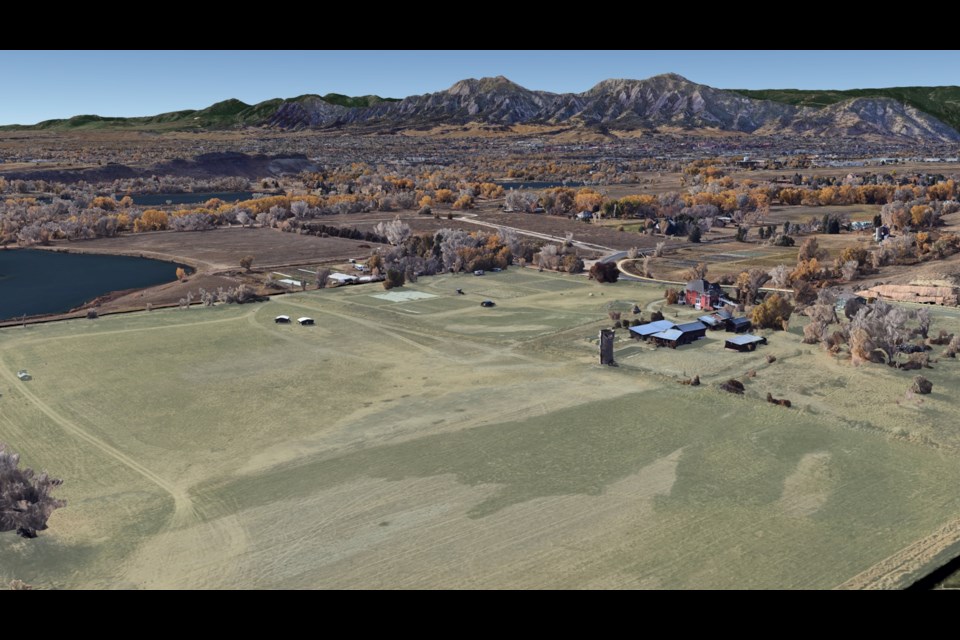The City of Boulder’s Open Space and Mountain Parks (OSMP) department is in the early stages of designing a new Healing Trail, a project aimed at providing a space for reflection, education, and environmental restoration. The initiative is part of a larger concept plan that balances historical preservation, ecological rehabilitation, and community engagement.
“We’re looking to design a place where we can share information about the history of the site, but also create a space where people can reflect, connect with the land, and find healing,” said Katie Knapp, principal planner for OSMP.
The site of the Healing Trail, which will be located at the Fort Chambers / Poor Farm site on 63rd Street, holds deep historical significance, particularly in its connection to Fort Chambers, a militia training ground used by settlers in the 1860s. Members of Company D trained here before taking part in the Sand Creek Massacre in 1864, a violent attack on Cheyenne and Arapaho people. This connection is central to the Healing Trail project, which seeks to help recognize this painful chapter in history.
“One of our goals is to co-create this space with tribal representatives and the community to determine which stories need to be shared and why,” Knapp said.
Alongside the Fort Chambers history, the land also housed the Boulder County Poor Farm, which operated from the late 19th to early 20th centuries. The farm served as a refuge for individuals who couldn’t support themselves, including the elderly and those with mental illnesses. The property’s historic Queen Anne-style house remains a significant landmark, and it is listed on the National Register of Historic Places.
The land has undergone significant ecological disruption due to past gravel mining operations, leaving old pits and degraded habitats. As part of OSMP’s broader concept plan, areas affected by the mining will undergo ecological restoration to enhance environmental sustainability.
“One of the main challenges is balancing agricultural values, environmental restoration, and visitor experience,” Knapp said. “We want to ensure that we’re not degrading one in favor of the other but instead creating a space where all of these elements coexist in a meaningful way.”
According to the project management plan, the site is also home to various sensitive ecological features, and OSMP will work toward mitigating the environmental impact of development.
The project’s first phase, which ran through March 30, focused on gathering community input to identify important historical themes and ecological priorities. OSMP hosted a public meeting on March 21 where attendees discussed the site’s history, indigenous perspectives, and land restoration efforts.
In addition to public engagement, the city is collaborating with indigenous tribes, historical organizations, and other stakeholders to ensure the Healing Trail is both inclusive and educational. Boulder has recently joined the International Coalition of Sites of Conscience, a global organization dedicated to preserving places with complex histories, including the Sand Creek Massacre site.
“There’s only so much we can convey at this one location,” Knapp said. “By forming partnerships with organizations like the Sand Creek Massacre Foundation and History Colorado, we’re expanding the opportunities for people to learn and engage with this history.”
A key part of this effort is acknowledging the original stewards of the land. More details on this recognition and the project’s progress can be found in the city’s press release.
The Healing Trail project will be developed in five phases over the next 15 to 18 months. After gathering initial input, OSMP will work with tribal representatives and community members to prioritize key stories and design an interpretive experience, which may include signage, artwork, and interactive elements. A draft design will be presented for further public feedback before a final plan is established.
The Healing Trail will ensure compliance with ADA standards and incorporate features such as bus drop-off areas and bike racks to accommodate a variety of visitors.
“We want this to be a place where everyone feels welcome,” Knapp said.
With strong community interest and collaboration from indigenous groups, historians, and conservationists, the Healing Trail stands to be more than just a path through Boulder’s open space. It aims to be a bridge between past and present, fostering understanding and healing for future generations.





